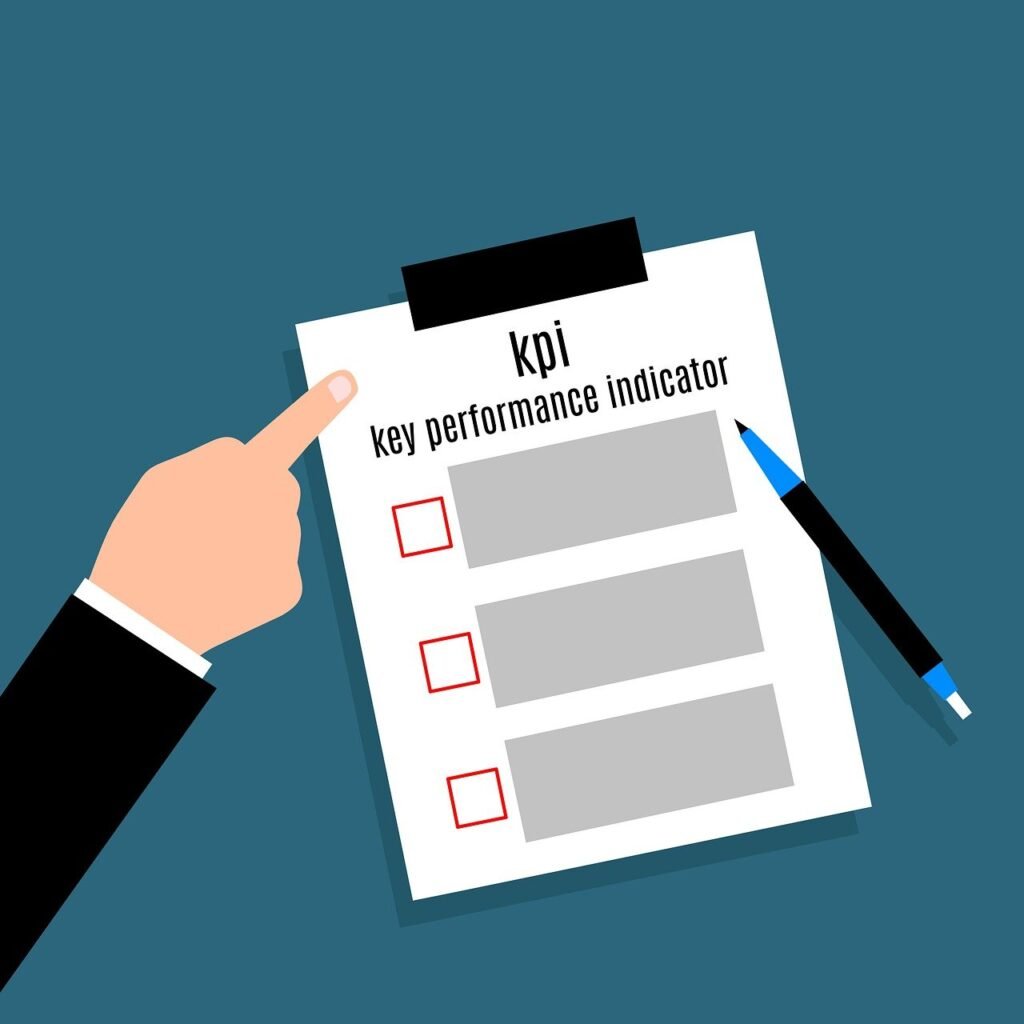This Article has been revised, edited and added to, by Poulomi Chakraborty.
- Understanding Data Analytics and Digital Marketing
- Gathering and Analyzing Data for Digital Marketing
- Integrating Data Insights into a Holistic Digital Marketing Plan
- Step 1: Define Your Marketing Objectives
- Step 2: Create a Data-Driven Audience Profile
- Step 3: Align Channels and Content with Audience Insights
- Step 4: Leverage Technology for Personalization
- Step 5: Optimize Based on Performance Data
- Step 6: Foster a Culture of Data
- Step 7: Ensure Data Privacy and Security
- The Cycle of Improvement
- Evaluating the Success of Your Data-Driven Marketing Strategy
- Exploring the Role of Content Marketing in a Data-Driven Strategy
- Effective Implementation of Data-Driven Content Marketing Strategies
- Analytical Tools and Techniques to Enhance Content Marketing
- Conclusion
In today’s digital age, marketing is no longer just about creativity; it’s about data-driven decisions. Data analytics is transforming the way brands engage with their audiences, making marketing campaigns more personalized and effective. This article will explore how you can harness the power of data analytics to refine your digital marketing strategy, ensuring every decision is backed by solid evidence and insight.
Understanding Data Analytics and Digital Marketing

What is Data Analytics?
At its core, data analytics involves examining large sets of data to uncover hidden patterns, correlations, and insights. By applying these insights, businesses can make more informed decisions. In the realm of digital marketing, data analytics can be a game-changer—enabling marketers to understand consumer behavior, predict trends, and allocate resources more efficiently.
The Traditional Approach to Digital Marketing
Traditionally, digital marketing strategies were often based on assumptions or broad market trends. Marketers might have had a general idea of what works based on past campaigns or industry standards but lacked the ability to drill down into the specifics of consumer behavior and preferences. Campaigns were often a one-size-fits-all approach where the same message was broadcast to all segments of an audience without much differentiation.
How Data Analytics Changes the Game
Data analytics introduces precision to this process. By collecting and analyzing data from various sources—social media interactions, website visits, online purchases, and even customer feedback—marketers can now create highly targeted and personalized marketing strategies. For example, data can reveal that visitors from one geographic location may prefer different products or respond better to different types of advertising than visitors from another location.
Gathering and Analyzing Data for Digital Marketing
Effective digital marketing is not just about having data but knowing how to gather, analyze, and apply it. Here’s how you can approach this critical process to ensure your marketing strategy is as sharp as possible.
Data Collection: The Foundation of Analytics
Choosing the Right Data Sources
The first step in harnessing the power of data analytics is collecting the right data. This involves identifying various data sources that can provide insights into consumer behaviors and preferences. Common sources include:
- Website Analytics: Tools like Google Analytics can track visitor behavior on your website, showing you what users are doing, where they come from, and how long they stay on your pages.
- Social Media Metrics: Platforms like Facebook, Instagram, and Twitter offer in-depth analytics about engagement rates, follower demographics, and more.
- Customer Feedback: Surveys, reviews, and direct feedback can provide qualitative insights into what customers think about your brand and products.
- Sales Data: This includes data from online sales, in-store transactions, and any other customer purchase information.
Implementing Data Collection Tools
Once you’ve identified what data you need, the next step is implementing tools and methods to collect it. This might involve setting up Google Analytics on your website, using social media analytics tools, or integrating customer feedback forms into your sales process.
Data Analysis: Turning Data into Insights
Data Processing and Cleaning
With data in hand, the next challenge is turning it into actionable insights. This begins with data processing and cleaning—removing inaccuracies, filling missing values, and ensuring data consistency.
Analyzing Data for Insights
Once your data is ready, you can start analyzing it to find patterns and insights. Some common methods include:
- Segmentation: Dividing your customer base into groups based on shared characteristics or behaviors, allowing for more targeted marketing.
- Trend Analysis: Looking at data over time to identify any trends in sales or customer behavior, which can help predict future activities.
- Customer Journey Mapping: Analyzing the paths customers take from discovering your product to making a purchase, helping identify what factors drive sales.
Applying Insights to Marketing Strategy
Real-Time Decision Making
With fresh insights, you can make real-time adjustments to your marketing strategies. For instance, if data shows that certain blog posts drive a lot of traffic to your website, you might decide to create more content on similar topics.
Predictive Analytics
Data not only tells you about the past and present but can also help predict future trends. By using predictive analytics, you can anticipate customer needs and adjust your marketing strategies accordingly, staying ahead of the competition.
Integrating Data Insights into a Holistic Digital Marketing Plan

To maximize the impact of your digital marketing efforts, integrating data insights into a comprehensive strategy is crucial. This not only involves the tactical use of data for individual campaigns but also aligning your overall marketing activities under one data-informed vision.
Step 1: Define Your Marketing Objectives
Start with clear, measurable objectives. What are your business goals for the year? Do you want to increase brand awareness, boost sales, or perhaps improve customer retention? Each goal will dictate different strategies and metrics for success. Data plays a key role in setting these objectives because it provides a baseline to measure against and insights into what’s achievable.
Step 2: Create a Data-Driven Audience Profile
Use your collected data to create detailed audience profiles or personas. This should be more comprehensive than simple demographic information; delve into psychographics like interests, behaviors, and motivations. Understanding who your customers are, what channels they frequent, and what messages resonate with them allows you to tailor your marketing strategies effectively.
Step 3: Align Channels and Content with Audience Insights
Now that you know who you are targeting and what your goals are, it’s time to select the channels and types of content that best align with your audience’s preferences. For instance, if data shows that your audience prefers video content and spends a lot of time on YouTube, you should prioritize video production and consider YouTube ads or influencer partnerships.
Step 4: Leverage Technology for Personalization
Use technology to personalize your marketing efforts at scale. With tools like CRM systems, marketing automation, and AI-driven analytics platforms, you can automate personalized customer journeys. For example, you might set up an email automation sequence that sends tailored messages based on specific actions a user takes on your website.
Step 5: Optimize Based on Performance Data
Continuous optimization is key. Use real-time data to tweak and refine your campaigns. Look at metrics like conversion rates, click-through rates, and social engagement to understand what’s working and what’s not. This ongoing process helps you adapt to changing consumer preferences and market conditions.
Step 6: Foster a Culture of Data
For data to be truly integral to your digital marketing strategy, it must be part of your organization’s culture. Encourage teams across your company to think data-first and provide training on how to interpret and use data. The more your team understands the importance of data, the better they can utilize it to make informed decisions.
Step 7: Ensure Data Privacy and Security
In the age of data breaches and privacy concerns, make sure that your data collection and usage comply with all relevant laws and regulations, such as GDPR for European customers. Building trust with your customers by handling their data responsibly is as important as the insights the data provides.
The Cycle of Improvement
Developing a holistic digital marketing plan using data analytics is not a one-time effort but a cycle of continuous improvement. By consistently collecting data, gaining insights, and applying them, you can not only meet your current marketing objectives but also anticipate future challenges and opportunities. This proactive approach keeps your marketing efforts agile and aligned with the ever-evolving digital landscape.
Evaluating the Success of Your Data-Driven Marketing Strategy
Once you’ve implemented a data-driven marketing strategy, the next crucial step is evaluation. Measuring the effectiveness of your efforts ensures that you are not only achieving your goals but also maximizing your ROI and continuously improving. Here’s how to methodically assess the success of your marketing initiatives.
Establish Key Performance Indicators (KPIs)

Before you can measure success, you need to define what success looks like. This involves setting Key Performance Indicators (KPIs) that are aligned with your marketing objectives. Common KPIs include conversion rate, customer acquisition cost, return on ad spend (ROAS), and customer lifetime value (CLV). These metrics should be specific, measurable, attainable, relevant, and time-bound (SMART).
Use Analytics Tools to Track Performance
Leverage analytics tools to continuously monitor how well your campaigns are doing against the KPIs. Tools like Google Analytics, social media insights, and marketing automation software provide a wealth of data on user behavior, campaign performance, and more. By setting up custom dashboards, you can get a real-time view of your marketing efforts and their outcomes.
Conduct A/B Testing
A/B testing is vital in a data-driven strategy. By testing different versions of your website, landing pages, emails, or ads, you can determine which elements perform best and optimize accordingly. This direct comparison can reveal more effective headlines, visuals, call-to-actions (CTAs), and overall designs that resonate with your target audience.
Analyze Customer Feedback
Quantitative data gives you the numbers, but qualitative data such as customer feedback provides context to those numbers. Use surveys, user testing, and feedback forms to gather insights directly from your customers. This feedback can help explain why certain strategies are more effective and uncover areas for improvement.
Review Overall Business Impact
While specific campaign KPIs are crucial, it’s also important to evaluate how your marketing strategies impact the overall business. Are your marketing efforts leading to an increase in overall brand awareness? Is there a noticeable uplift in customer satisfaction or retention? Connecting these dots can sometimes reveal the true value of your data-driven approach.
Adapt and Evolve Strategies Based on Data
The final step in the evaluation process is using your findings to adapt and refine your strategies. If data shows that certain tactics are working well, consider allocating more resources to them. Conversely, underperforming areas might need to be rethought or discontinued. This cycle of testing, learning, and adapting should be continuous.
Communicate Results to Stakeholders
Effective communication is key to organizational buy-in for data-driven marketing. Prepare clear reports and presentations that show how your marketing efforts meet business goals. Highlight successes, learnings, and areas of improvement to stakeholders regularly to ensure continued support and resource allocation.
A Dynamic Approach to Marketing Success
Evaluating your data-driven marketing strategy is not just about measuring—it’s about understanding and improving. It involves a blend of analytics, creativity, and strategic planning. As digital landscapes evolve, so should your approach. Stay flexible, keep learning from the data, and continuously refine your strategy to stay ahead in a competitive market.

Related: Check out our free SEO suite

Exploring the Role of Content Marketing in a Data-Driven Strategy
Content marketing is a critical component of any digital marketing strategy, offering a way to engage customers, build brand authority, and improve search engine rankings. When combined with data analytics, content marketing can become even more powerful, enabling marketers to create more targeted, effective, and engaging content. Here’s how data can optimize your content marketing efforts.
Understanding Content Marketing
Content marketing involves creating and sharing valuable, relevant, and consistent content to attract and retain a clearly-defined audience — ultimately, to drive profitable customer action. This content can range from blog posts and videos to infographics and podcasts. The goal is to provide content that is not only informative but also engaging and persuasive.
The Integration of Data Analytics
Data analytics enhances content marketing by providing insights into what content performs best, who it resonates with, and why certain pieces are more successful. Here’s how you can leverage data to refine your content marketing strategy:
Audience Insights
Data helps you understand your audience on a deeper level. Analytics tools can show you demographic details, interests, and behavior patterns, such as how long visitors stay on your pages, what content they engage with, and through which channels they prefer to consume it. This information allows you to create content that specifically addresses the needs and interests of your audience.
Content Performance Analysis
Once your content is live, data analytics can track its performance across various metrics, such as page views, shares, likes, and comments. More advanced metrics might include engagement rate, conversion rate, and bounce rate. Analyzing these metrics helps you understand what types of content work best and what topics your audience finds most engaging.
SEO Optimization
Data-driven content marketing also extends to search engine optimization (SEO). By analyzing keywords that lead users to your site, you can tailor your content to boost SEO performance. Tools like Google Analytics and Ahrefs can help identify which keywords to target, the volume of search traffic they bring, and their conversion potential.
Personalization
Using data to personalize content can significantly increase engagement. For example, if data shows that a particular segment of your audience frequently reads articles about vegetarian recipes, you could create more content around that topic or even personalize newsletters to include related content recommendations.
Predictive Analytics
Predictive analytics uses data to forecast future trends. In content marketing, this could mean identifying emerging topics before they become mainstream or predicting when to best publish certain types of content. This proactive approach ensures your content strategy stays ahead of the curve and relevant.
Challenges and Considerations
While data-driven content marketing is powerful, it also presents challenges. The sheer volume of data can be overwhelming, and distinguishing between useful data and noise is crucial. Additionally, maintaining creativity and originality in a data-driven approach requires a balance; you shouldn’t let data stifle creativity but use it to enhance your creative efforts.
A Balanced Approach
Ultimately, the best content marketing strategies use a balanced approach, combining creative storytelling with rigorous data analysis. This blend ensures that your content not only reaches the right audience but also engages them in a meaningful way, driving business objectives forward.
Effective Implementation of Data-Driven Content Marketing Strategies

To truly harness the power of data in content marketing, it’s crucial to implement strategies effectively. This involves a series of steps that blend creative efforts with analytical precision. Here’s a detailed look at how to execute a data-driven content marketing strategy effectively.
Set Clear Goals and Objectives
Before diving into content creation, clearly define what you aim to achieve with your content marketing efforts. Are you looking to increase brand awareness, generate leads, improve customer retention, or boost sales? Setting specific, measurable, achievable, relevant, and time-bound (SMART) goals at the outset helps direct your strategy and provides a benchmark for measuring success.
Gather and Analyze Relevant Data
Collect Data:
Start by gathering data that can inform your content strategy. This includes demographic data, user behavior data from your website, social media analytics, customer feedback, and any other relevant information that can provide insights into your audience’s preferences and behaviors.
Analyze Data:
Use analytical tools to process this data and uncover patterns and trends. Look for answers to questions like:
- Which topics does your audience engage with most frequently?
- What formats (videos, articles, infographics) do they prefer?
- What are the peak times that your audience consumes content?
Develop Targeted Content
With insights from your data analysis, develop content that speaks directly to the interests and needs of your target audience. Tailor the tone, style, and delivery of your content to match the preferences revealed by your data. For example, if data shows that your audience prefers short, informative videos over lengthy articles, adjust your content production accordingly.
Optimize for SEO
Utilize SEO best practices to ensure that your content reaches its intended audience. Incorporate relevant keywords, optimize meta tags and descriptions, and ensure that your content is mobile-friendly. SEO tools can provide data on keyword performance and help track the ranking of your content on search engines, giving you further insights into how to refine your SEO strategies.
Distribute and Promote Content
Distribution and promotion are key to ensuring that your content reaches the widest possible audience. Use your data to determine the best channels for distribution—whether that’s social media, email newsletters, or other platforms. Tailor your promotion strategy to align with where your data shows your audience is most active and engaged.
Measure and Adjust
Once your content is live, continuously measure its performance against your predefined KPIs. Use tools like Google Analytics, social media insights, and email marketing analytics to track engagement, conversion rates, and other relevant metrics. Analyze this data to understand what is working and what isn’t, and make adjustments to your strategy as needed. This might involve tweaking content types, adjusting publishing schedules, or revising promotional tactics.
Foster Continuous Learning and Adaptation
Content marketing in a data-driven environment is an ongoing process of learning and adaptation. Encourage a culture within your organization that values data and analytics, and is agile enough to respond to new insights and market changes. Regularly update your team on the latest data insights and integrate these learnings into future content planning.
A Dynamic, Data-Informed Approach
Implementing a data-driven content marketing strategy requires a dynamic approach that combines creativity with analytical rigor. By continuously gathering and analyzing data, developing targeted content, and adapting to new insights, you can ensure that your content marketing efforts are effective, engaging, and directly contributing to your business goals.
Analytical Tools and Techniques to Enhance Content Marketing
To successfully implement a data-driven content marketing strategy, it’s essential to leverage the right tools and techniques. These help you collect, analyze, and act on data effectively, ensuring your content resonates with the target audience and achieves your business objectives. Here are some of the most valuable analytical tools and techniques that can enhance your content marketing efforts.
1. Google Analytics

Purpose: To track and report website traffic, user behavior, and conversion metrics.
Features:
- Audience Insights: Understand demographic and psychographic details of your website visitors.
- Behavior Flow: See the path users typically take through your site, which can help you optimize the user journey.
- Conversion Tracking: Set up goals to track specific actions taken on your site, like newsletter sign-ups or product purchases.
How to Use: Integrate Google Analytics with your website by adding the tracking code to your site’s header. Use the data to tailor content topics, determine the best posting times, and improve user experience.
2. Ahrefs

Purpose: To assist with SEO and competitive analysis.
Features:
- Keyword Explorer: Find high-value keywords and see keyword difficulty scores.
- Site Audit: Identify SEO issues on your site that may be hindering performance.
- Content Explorer: Discover popular content within your niche to get ideas and see what resonates with audiences.
How to Use: Use Ahrefs to refine your content strategy based on what works for competitors and to discover gaps in your own content. Adjust your SEO tactics based on insights from the site audit.
3. BuzzSumo

Purpose: To analyze what content performs best for any topic or competitor.
Features:
- Content Insights: Find the most shared content across all major social media platforms.
- Influencer Information: Identify influencers by topic who can amplify your content’s reach.
- Alerts: Set up alerts for keywords, brand names, or competitors to stay informed about new content in your field.
How to Use: Use BuzzSumo to gauge the popularity of different content formats and topics, and to plan your content creation around proven successful materials. Engage with influencers who can help promote your content to a wider audience.
4. HubSpot

Purpose: For marketing automation, including managing content and tracking its performance.
Features:
- Email Marketing: Automate and personalize your email campaigns.
- CRM Integration: Align content with sales strategies by understanding customer interactions.
- Analytics Dashboard: Monitor the performance of content across different platforms in one place.
How to Use: HubSpot can be used for end-to-end management of your content lifecycle, from planning and publication to analysis and lead generation. Use its analytics to fine-tune your content and email strategies based on user responses.
5. Tableau
Purpose: To create visualizations that make data easier to understand and act upon.
Features:
- Interactive Dashboards: Create and share interactive dashboards that showcase your content performance.
- Data Blending: Combine data from different sources to get a more comprehensive view of your content strategy’s effectiveness.
- Real-time Data: Access and analyze real-time data for up-to-the-minute decision-making.
How to Use: Employ Tableau to visualize complex data sets related to content performance, making it easier for teams to identify trends and patterns that can inform future content strategies.
Enhancing Strategy with Tools
By integrating these tools into your content marketing strategy, you can gain a deeper understanding of your audience, refine your SEO efforts, optimize content based on real-world performance, and ultimately drive more effective marketing outcomes. Each tool offers unique capabilities that, when used together, provide a robust framework for making data-driven decisions that can elevate the impact of your content marketing.
Conclusion
In the digital marketing landscape, the fusion of creative content with data analytics forms the cornerstone of a successful strategy. Tools like Google Analytics, Ahrefs, BuzzSumo, HubSpot, and Tableau are invaluable for gathering insights that inform smarter, more targeted content decisions. By leveraging these tools, marketers can understand audience behaviors, optimize SEO, monitor content performance, and visualize data to make informed adjustments in real-time.
Effective implementation involves setting clear goals, continuously collecting and analyzing data, and adapting strategies based on insights gained. This dynamic process helps ensure that content not only reaches the intended audience but also engages them meaningfully, driving business objectives forward. In essence, a data-driven approach empowers marketers to craft compelling narratives that resonate deeply with audiences, ensuring every piece of content contributes strategically to the overarching business goals.
Remember, in content marketing, success comes from not just creating but creating with purpose, guided by data-driven insights that enhance relevance and impact.
Read Next:
- The Future of Digital Marketing: Predictions for the Next Decade
- Digital Marketing for Startups: Essential Strategies for Growth
- A Deep Dive into Social Media’s Role in Digital Marketing
- The Evolution of Digital Marketing: From Billboards to Bots
- Digital Marketing Metrics that Matter: Tracking Success and ROI






















Comments are closed.